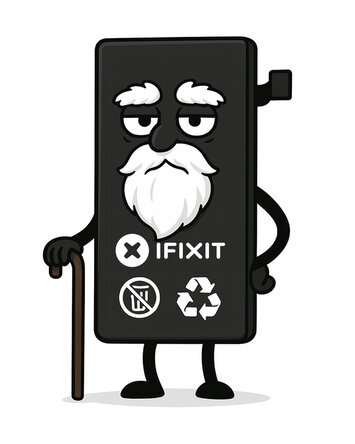
Rechargeable batteries wear out. That’s normal and unavoidable. Over time, they can’t hold as much charge or deliver as much power. That leads to a shorter battery life (how long the battery lasts on a charge) and degraded performance. When you can’t use your phone like normal because of these things, that’s the end of your battery’s lifespan.
A battery’s lifespan is usually defined as the number of “charge cycles” it can experience before the capacity is reduced to 80% of its original capacity. A charge cycle is defined as using and recharging 100% of a battery’s capacity. For instance, using 50% of a phone’s battery and recharging it to 100% every day for four days is two charge cycles.
iPhones from the iPhone 14 and later are designed to have a lifespan of 1000 charge cycles. Android phones vary, but Google designs Pixel phones from the Pixel 8a and later to have a lifespan of 1000 charge cycles, too.
You can extend your battery’s lifespan with good charging habits and smart device settings. But when battery life inevitably gets too short, or when you start noticing iffy performance, replacing the battery can give your phone a boost and add a few more years to its life.
What’s inside a smartphone battery?
Let’s get in the weeds for a minute.
Modern smartphones use lithium-ion (Li-ion) batteries. These contain layers of a metal oxide around a metal cathode and graphite around a metal anode. Thin sheets of electrolyte-soaked polymer separate the anode and cathode layers.
Lithium ions, initially part of the metal oxide, shuttle between the anodes and cathodes through the separator layers. These ions cause reactions in the anode and cathode layers that move electrons—resulting in the battery charging or discharging. Different batteries use different chemistries, but the basics are the same for all Li-ion cells.
That’s enough of that, but if you want to dive deeper, check out Battery University.
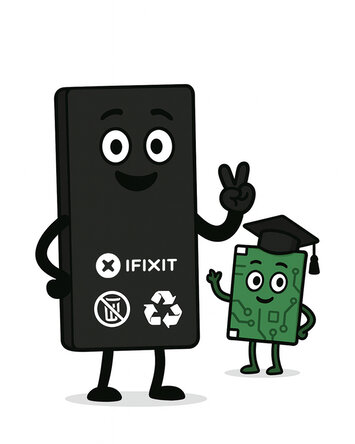
What does all this mean for you? They store a lot of energy for their weight and size, they provide enough battery life and lifespan for most people, and they support both fast and slow charging. They’re also resistant to forming “memory,” a problem in other battery types that causes them to “forget” their capacity when they’re recharged before they’re completely drained.
They’re also safe in normal conditions, but should never be bent, poked, or heated. That can lead to a reaction kind of like cracking a glowstick—except this glowstick combusts or explodes.
It’s also good to know that modern smartphone batteries are, well, smart. They rely on smart chips to manage charging and discharging, and monitor battery health. Along with software, these chips help batteries perform better and last longer.
But even the best hardware and software can only do so much to protect your battery.
What causes batteries to die and how to make them last longer.
Lithium-ion batteries are a great choice for modern smartphones. However, they do need to be treated right to maximize lifespan. Here are a few things that shorten the lifespan of smartphone batteries and what to do about them.
1. Extreme states of charge
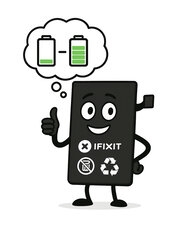
Completely draining or charging a Li-ion battery stresses it. Try not to let your battery die, and avoid charging it all the way to 100% unless you really need a full charge. Aim to keep the battery between 20% and 80% charged.
The most important thing to avoid is charging your phone when it’s nearly full (above 80%). For instance, consistently charging your phone to 100% after it falls to 80% will severely damage your battery’s capacity. Think of it like eating a huge meal every time you get just a little bit hungry—that’s not good for you, and not good for your phone battery!
Most smartphones have settings that limit battery charging above a certain percentage, such as “protect battery” in Samsung phones, Optimized Battery Charging in iPhones, and Adaptive Battery in Pixel phones. This allows you to keep your phone plugged in overnight while minimizing negative impacts on your battery. Since lithium-ion batteries have no memory effects, partial charges are okay.
2. Heat
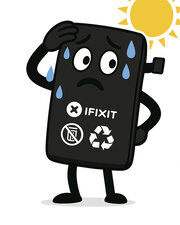
Lithium-ion batteries are particularly sensitive to heat. Exposing batteries to high temperatures (above 100 ºF), especially when the battery is fully charged, reduces its lifespan. Keep your phone cool and out of direct sunlight, especially during use and when it’s fully charged. (Note that some phone cases can retain heat, making the phone hot even when it seems cool.)
3. The sleep of death
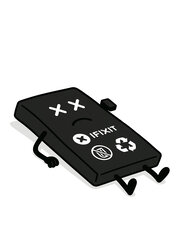
Don’t keep a Li-ion battery discharged for long periods of time. When a battery has a low state of charge, its protection circuit will cut it off. However, the battery will continue to “self-discharge” even if it’s completely unused. Once fully depleted, a Li-ion battery may not be able to recharge at all.
If you must store a Li-ion battery for a long period of time, charge it to around 40%. Check it occasionally and restore charge to around 40% as needed.
Swollen battery safety
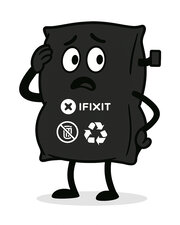
Sometimes, a battery turns into a spicy pillow. There’s no need to panic, but you must immediately stop using a swollen battery. The swelling is caused by gases produced by a severely degraded cell. As long as the pouch remains intact, there’s little risk of fire, but proceed with caution.
Take appropriate actions to minimize the risk of a swollen battery. Then dispose of it properly, ideally by recycling it. Never put a lithium-ion battery in the trash!
When to replace a smartphone battery
Manufacturers often recommend replacing a smartphone battery when it can hold only 80% of its original capacity. However, there’s no need to replace your phone’s battery until the battery life or performance impact your ability to use it. If your phone dies between charges or it seems really slow, it’s time for a new battery.
But it’s important to note that your phone could benefit from a new battery even before the reported capacity drops below 80%. This metric is only one facet of battery health. Other factors, like weakened current draw or greater voltage slumps, could hurt your battery life or performance even when the capacity looks fine. Things like exposure to heat and repeated charging at high charge states can cause this.
There are many options for getting a smartphone battery replaced. Some manufacturers offer mail-in service, or you can take it to a repair center. This could be a manufacturer’s store, an authorized service provider, or an independent repair provider.
But the most convenient (and usually cheapest) option is to search for a battery replacement Fix Kit here on iFixit. We’ll mail you everything you need to follow our repair guide and replace your phone’s battery.
Battery calibration
Sometimes when a new battery is installed, the phone’s battery meter needs to be calibrated. Calibration doesn’t impact the actual capacity or performance of the battery at all. Instead, it makes sure that the meter is accurately reporting the battery’s charge. If needed, calibrate your battery after replacing it.
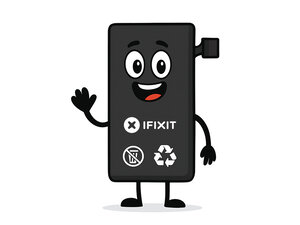



crwdns2944067:00crwdne2944067:0